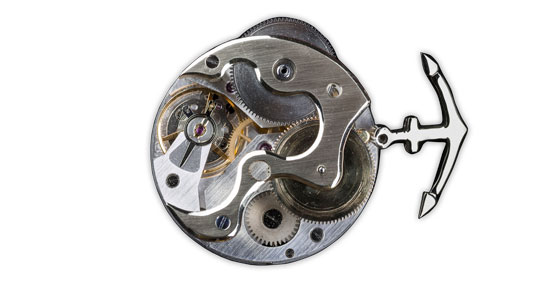
The 23rd edition of the competition organised by the Cartier Watchmaking Institute was open once again to apprentices. The latest artistic and technical creations of these young talents give expression to time based on the movement 6497.
As an outstanding reference in the field of continuing training, the competition of the Cartier Watchmaking Institute (IHC) invited apprentice watchmakers in their third year in Switzerland to give the finest possible evidence of their creativity and ingenuity. Their mission? To produce a winding system without using the stem on the movement 6497. Beyond national borders, the students at Lange Uhren GmbH were also invited to take up this challenge. Six watchmaking schools, eight watch industry apprenticeship centres and a private workshop responded to the appeal. In the end, 85 pieces were submitted to the jury.
Presided over by Christian Rieder, Director of Human Resources at the Cartier Watch Manufacturing Facilities, the eight prizes were presented on 13 May at Club 44 in La Chaux-de-Fonds. Corentin Currit (Chopard Manufacture, Fleurier) won first prize and a visit to Paris. He was followed by Till Böhringer (IWC International Watch Co, Schaffhausen) and Manuel Werder (Zeit Zentrum, Grenchen). The prize for originality went to Maxime Morotti (Technical School of the Vallée de Joux, Le Sentier). Off the top podium, Julius Oswald (Zeit Zentrum, Grenchen) took fourth place, followed by Dylan Parlee (Vaucher Manufacture, Fleurier), Chantal Staub (IWC International Watch Co, Schaffhausen) and Sylvain Jacquart (Technical School of the Vallée de Joux, Le Sentier). Each winner was presented with a Cartier watch.
Drawn from the watch industry world, the jury consisted of Estelle Fallet (Jury Chair and Chief Curator of the Museum of Art and History, Geneva), Nadia Gagnebin (photographer and graphic artist, La Chaux-de-Fonds), Giulio Papi (Technical Director, Le Locle), Jean-Marc Matthey (watch industry trainer, Evilard) and André Recordon (watch industry trainer, La Chaux-de-Fonds). These experts used six different criteria to judge the pieces presented to them: originality, quality of workmanship, functionality and cleanness of the movement.
In order to perpetuate the art of luxury watchmaking, Cartier created the Cartier Watch Institute (IHC) in 1993. This institution trains apprentices in such varied domains as the watch industry, polishing and micromechanical technology. Through this competition, the IHC pays tribute to the expertise of watch industry apprentices, giving them an opportunity to express their technical and artistic talents.
Identical to the previous editions, this year’s regulation set the age limit of the young apprentices at 25. The time allowed to complete their work was 32 hours. A further condition was that the movement must work and be strong enough to withstand carriage by post.
June 01, 2017


 News
News